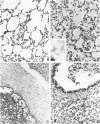Abstract
Squirrel monkeys were inoculated by the intratracheal inoculation of 700 Klebsiella pneumoniae organisms and developed lobar pneumonia in about 24 h. Characteristic clinical findings were fever, anorexia, and coughing. Laboratory findings included leukocytosis or leukopenia (with the latter more prominent in ultimately fatal infections), bacteremia, and shedding of bacteria into the pharynx. Infected monkeys showed increased plasma lysozyme activity as well as increased plasma ceruloplasmin, haptoglobin and alpha1-antitrypsin. The mortality rate was 60%, and the mean time of death was 50.5 h. Pathologically, the disease spread by means of Kohn's pores and other pathways that generally did not involve airways as a means of dissemination until about 30 h. Squirrel monkeys seem to be better models for human respiratory K. pneumoniae infection than rats or mice.
Full text
PDF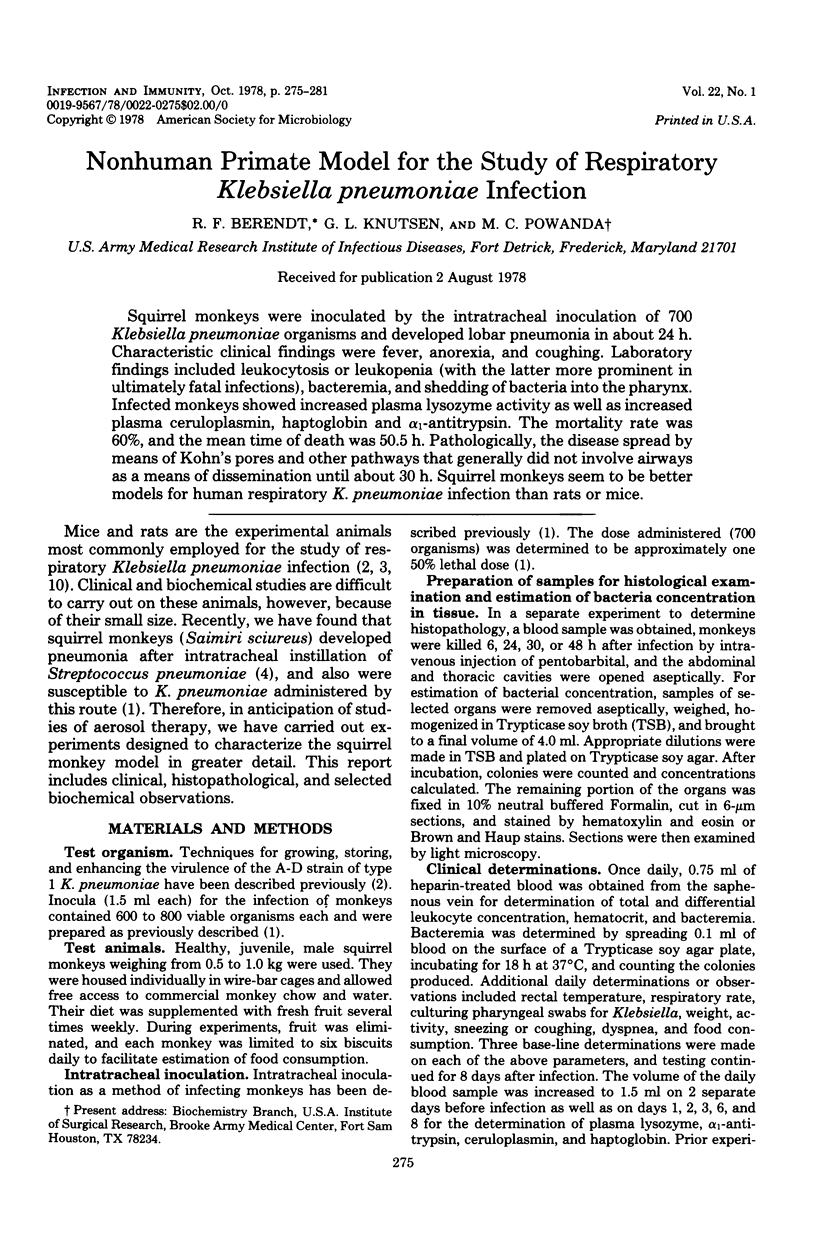
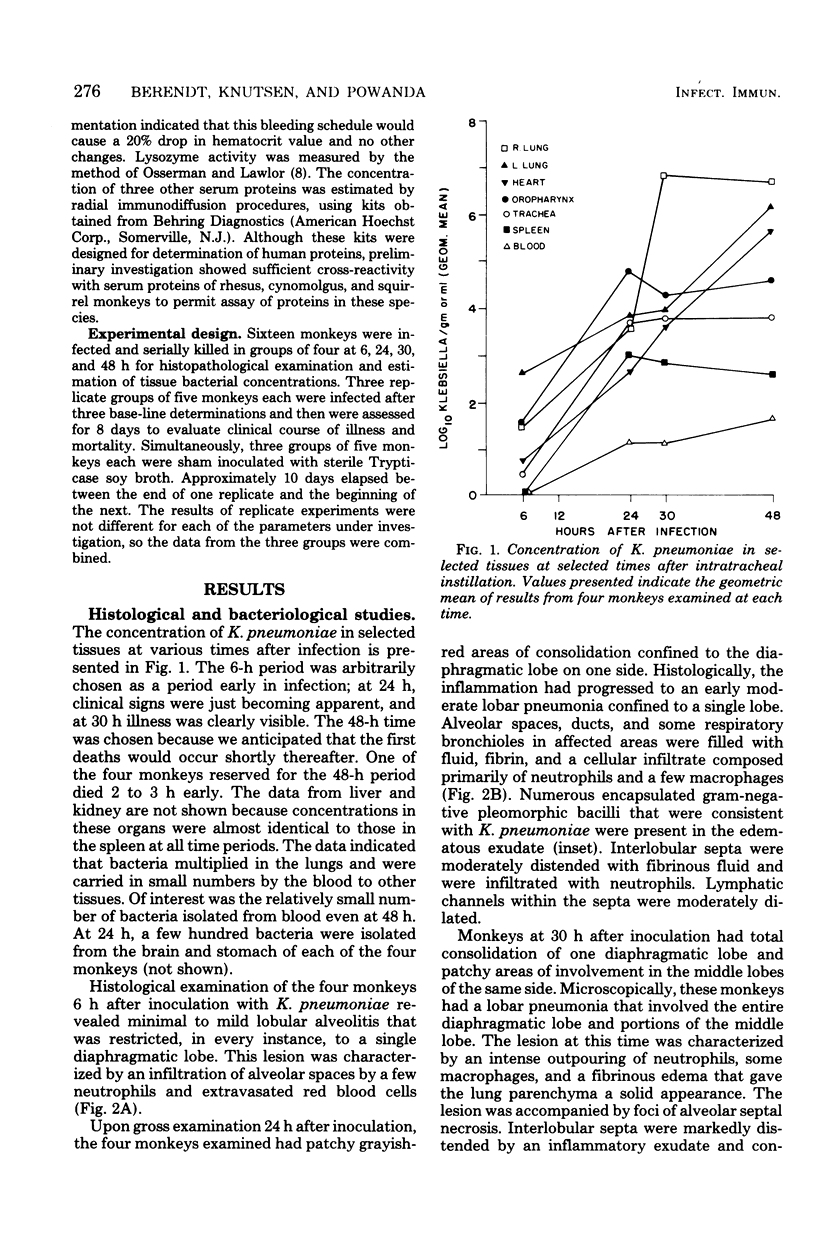
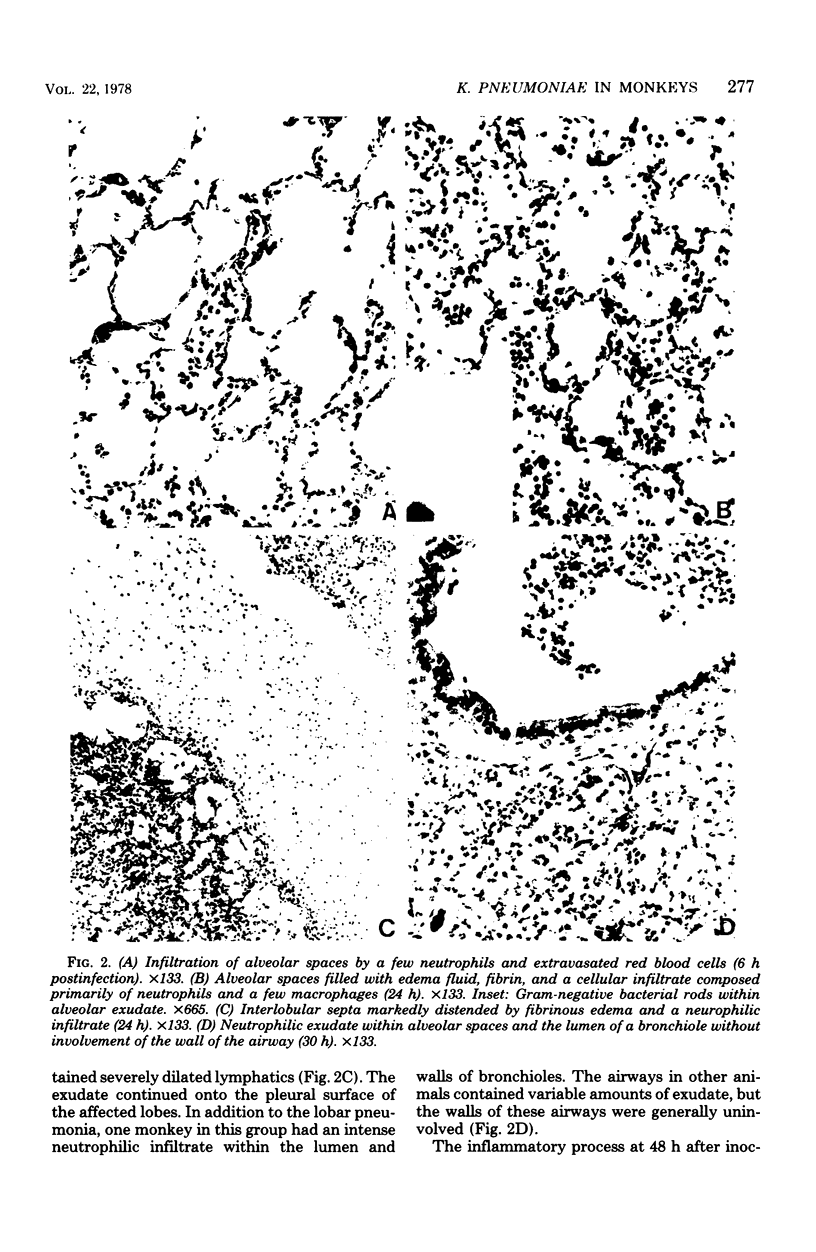
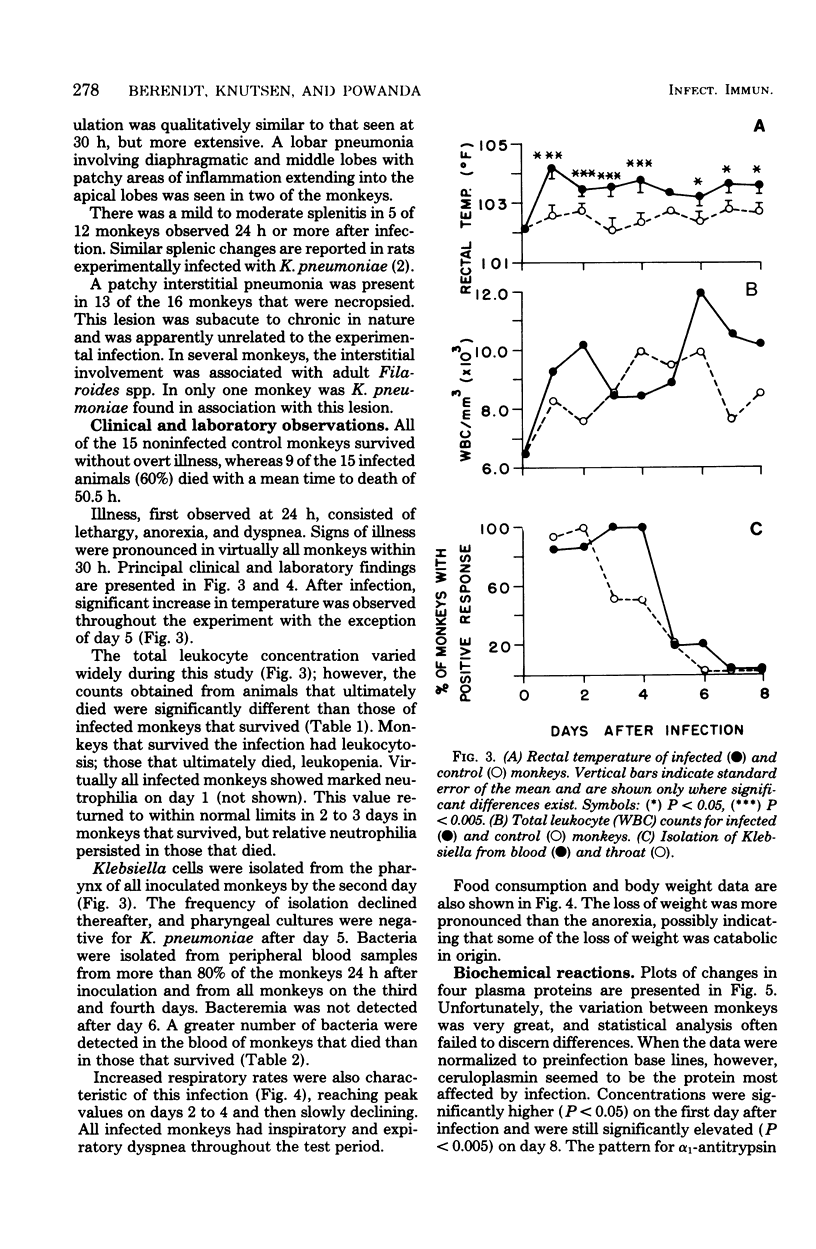
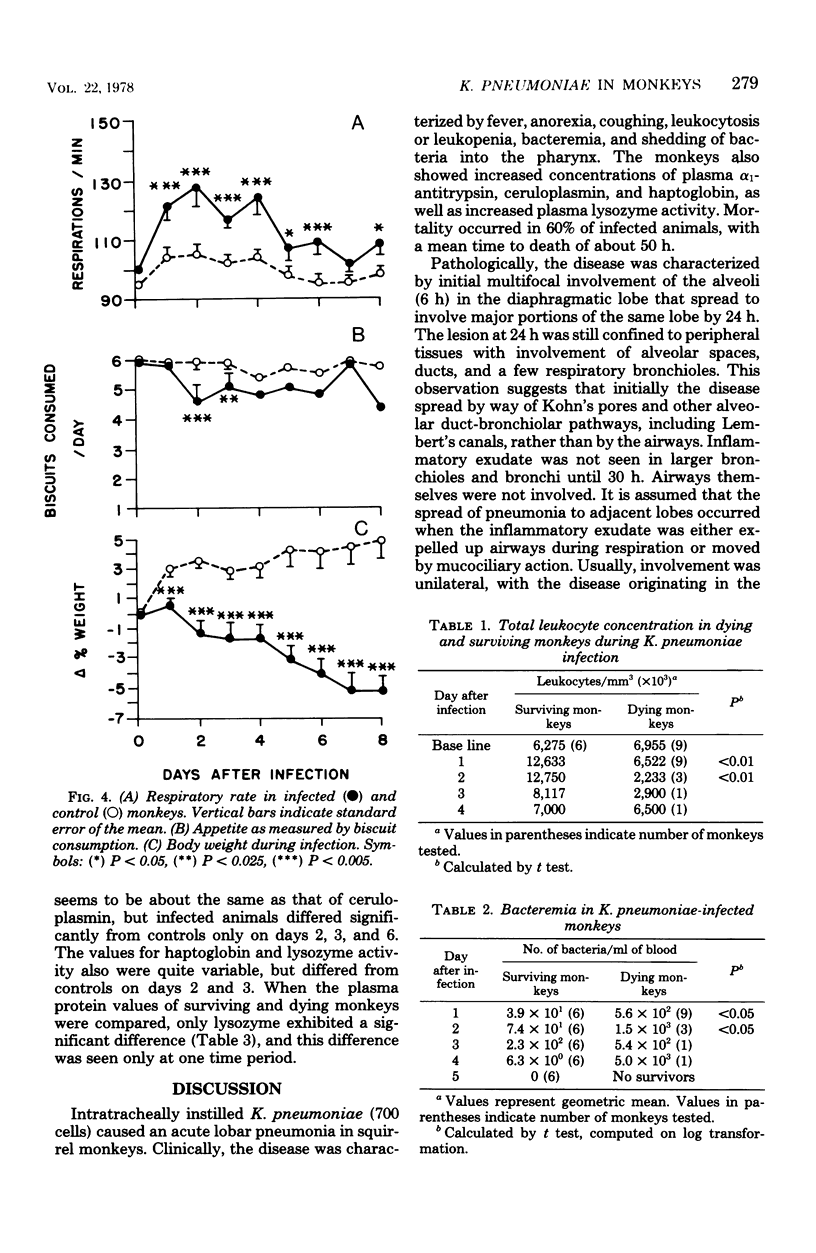
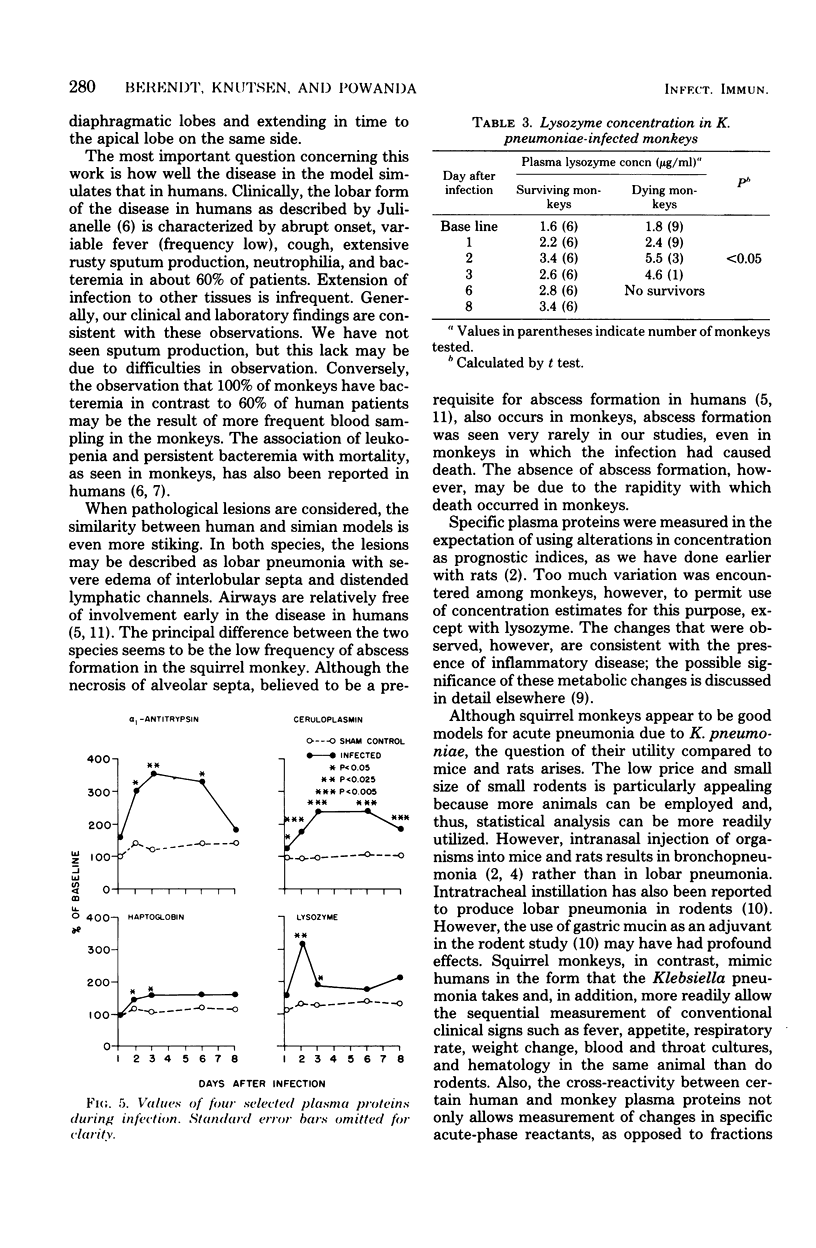
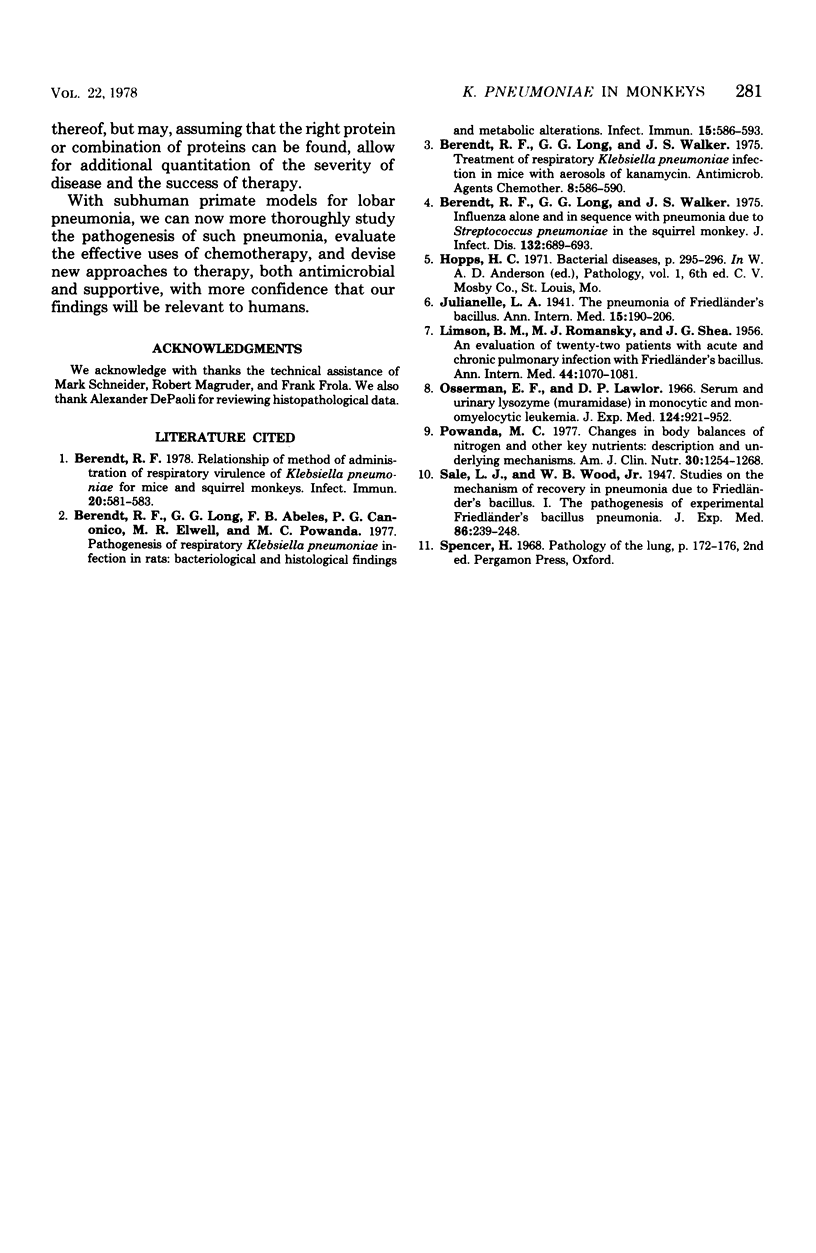
Images in this article
Selected References
These references are in PubMed. This may not be the complete list of references from this article.
- Berendt R. F., Long G. G., Abeles F. B., Canonico P. G., Elwell M. R., Powanda M. C. Pathogenesis of respiratory Klebsiella pneumoniae infection in rats: bacteriological and histological findings and metabolic alterations. Infect Immun. 1977 Feb;15(2):586–593. doi: 10.1128/iai.15.2.586-593.1977. [DOI] [PMC free article] [PubMed] [Google Scholar]
- Berendt R. F., Long G. G., Walker J. S. Influenza alone and in sequence with pneumonia due to Streptococcus pneumoniae in the squirrel monkey. J Infect Dis. 1975 Dec;132(6):689–693. doi: 10.1093/infdis/132.6.689. [DOI] [PubMed] [Google Scholar]
- Berendt R. F., Long G. G., Walker J. S. Treatment of respiratory Klebsiella pneumoniae infection in mice with aerosols of kanamycin. Antimicrob Agents Chemother. 1975 Nov;8(5):585–590. doi: 10.1128/aac.8.5.585. [DOI] [PMC free article] [PubMed] [Google Scholar]
- Berendt R. F. Relationship of method of administration to respiratory virulence of Klebsiella pneumoniae for mice and squirrel monkeys. Infect Immun. 1978 May;20(2):581–583. doi: 10.1128/iai.20.2.581-583.1978. [DOI] [PMC free article] [PubMed] [Google Scholar]
- LIMSON B. M., ROMANSKY M. J., SHEA J. G. An evaluation of twenty-two patients with acute and chronic pulmonary infection with Friedländer's bacillus. Ann Intern Med. 1956 Jun;44(6):1070–1081. doi: 10.7326/0003-4819-44-6-1070. [DOI] [PubMed] [Google Scholar]
- Osserman E. F., Lawlor D. P. Serum and urinary lysozyme (muramidase) in monocytic and monomyelocytic leukemia. J Exp Med. 1966 Nov 1;124(5):921–952. doi: 10.1084/jem.124.5.921. [DOI] [PMC free article] [PubMed] [Google Scholar]
- Powanda M. C. Changes in body balances of nitrogen and other key nutrients: description and underlying mechanisms. Am J Clin Nutr. 1977 Aug;30(8):1254–1268. doi: 10.1093/ajcn/30.8.1254. [DOI] [PubMed] [Google Scholar]



